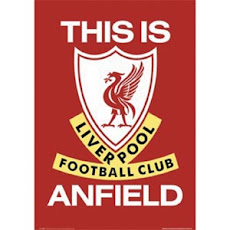 |
| Renato Augusto slumps to the pitch after the loss to Peru in the Copa America. |
This appears in the Monday, June 20, 2016 edition of the Business Mirror.
Selecao blues*
by rick olivares picture by eric canha
Brazil’s first round exit in the Copa America has claimed another coach (Dunga in his second tour of duty) and has everyone examining what is wrong with the Selecao. The malaise that has enveloped the world’s fifth largest country since the 7-1 beatdown Germany inflicted upon them in Belo Horizonte during the 2014 World Cup has not been lifted.
Pundits and fans have decried the tactics, the coaching, the commitment of the players, and whatnot. And there too have been calls for the joga bonito or roughly, “the beautiful game” with its samba fluidity. If I recall correctly, the 2002 World Cup champion side that won or even the 2006 edition (with Ronaldo, Ronaldinho, Kaka and company) espoused that style until France knocked them out in the quarterfinals with one man, Zinedine Zidane, showing Brazil and the world, that they aren’t the only ones who perform with panache. Then they went to a more pragmatic or defensive approached but were still reviled by fans.
Hours after Dunga was fired as national team boss for the second time in his career, Tite has been announced his replacement. And not only is restoring Brazil’s pride imperative but that he also bring back joga bonito.
I think before all this talk about restoring pride and playing the samba style that won them three World Cups, I think Brazil should take the time to reflect on a few things first.
First and foremost, I think that Brazil has to admit that the world has caught up with them.
Look, they have had good teams and great players. They always have. The Selecao just didn’t win because they ran up against good or even better teams. The sooner they accept that they are no longer the top football country in the world and that the world has not only caught up but passed them the better it is for them.
They might want to take a cue from their national kit sponsor Nike that produced “Road to Redemption” about the 2008 US Redeem Team. As a refresher, the United States began to take some huge losses in international basketball during the first eight years of the new millennium. In that five-part documentary, the journey to redemption is chronicled in amazing detail. However, one of the first things said is about respecting the opponent.
We aren’t saying Brazil disrespects their opponent. But realizing that they could be beat means they will not be complacent. Fear of losing makes one prepare even better.
Second, what tactics will it take to defeat what the best teams in the world are employing?
Tiki taka. The 4-2-3-1. The false “number nine”. Germans playing more attacking football since 2006. Carlo Ancelotti employing an unusual 4-1-2-1-2 or a 4-2-3-1 for AC Milan.
Since Brazil’s World Cup winning teams under Pele made the back four a staple of defending, if you look at football tactics in the new millennium, a lot of the newer schemes are coming out of Europe.
I think that Ancelotti’s tactics were more because of shaping their system to their team’s strengths.Under his system, Andrea Pirlo became one of the world’s best holding midfielders. Then he placed other creative players like Rui Costa and Kaka behind the strikers producing some dazzling displays of football. With a narrow midfield, Ancelotti made sure the wingbacks played vital roles on offense and defense.
The 4-2-3-1 broke barriers because for the longest time, it was considered heresy to play with only one striker!
Speaking of making do with one’s lineup, AS Roma’s coach during the 2005-06 season was former Spezia midfielder Luciano Spalletti. Without a real striker in his lineup (after an injury to Vincenzo Montella, Spalletti came up with a tactical innovation that many other teams and countries picked up. He ran a very unorthodox 4-6 formation packing the midfield players who could defend, create, and attack. Francesco Totti played slightly upfront of his team-mates in the “false #9” position with Rodrigo Taddei and Mancini coming in from the flanks and Simone Perrotta advancing from the central midfield. Opposing teams had difficulty in marking AS Roma that season (Spalletti’s teams finished second to Internazionale in the next three seasons) because they didn't know who was the primary attacker.
This innovation inspired managers from Barcelona’s Pep Guardiola to Germany’s Joachim Low to name a few.
And lastly, re-dedicating one’s self to the national team.
If you look at the Brazil’s Copa America roster, Neymar, Thiago Silva, and David Luiz were conspicuously missing. The latter two were not chosen by Dunga while the former was given a break for which he has since been lambasted by Rivelino and other former Brazilian stars.
They should once more take a cue from America’s basketball stars in that documentary, “Road to Redemption” where they gave up summers where they could rest just to bring the US back to international prominence.
* The title was inspired by Yasmina Traboulsi's "Bahia Blues" -- a powerful novel by this Brazilian of Lebanese descent.









No comments:
Post a Comment